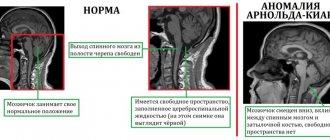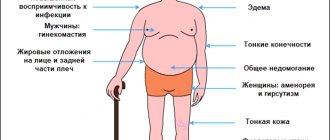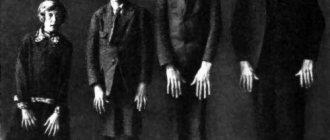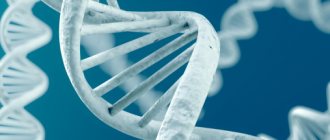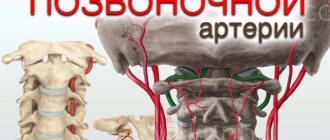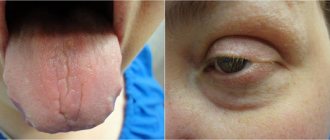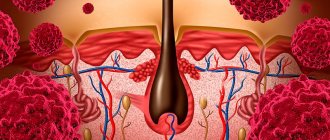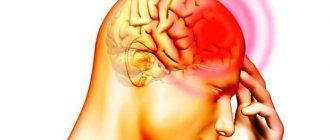General information about pathology
What is it, and how long do children with this syndrome live? Rett syndrome - photo:
Rett syndrome belongs to psychoneurology and was discovered in 1954 . Early manifestations of this pathology are similar to the symptoms of autism, so when diagnosing it is important to compare information and accurately make a diagnosis.
The disease occurs predominantly in girls , since its development is associated with the X chromosome. Girls with the disorder survive because they have two X chromosomes, while boys with the same disorder die before birth.
Rare cases of diagnosed Rett syndrome in boys are associated with Klinefelter syndrome , in which the boy has an extra X chromosome. Also, male children may develop atypical varieties of this pathology, but cases of incidence are extremely rare.
The pathology is considered common: out of 10-15 thousand girls born, one is a carrier of Rett syndrome.
Symptoms
Rett syndrome is characterized by signs that should not go unnoticed by attentive parents: such children begin to make aimless movements, they clench their hands in a peculiar way. However, all these manifestations, as a rule, either go completely unnoticed or are not perceived as manifestations of some kind of deviation. As for intrauterine development, this problem does not arise here at all, since all manifestations of the deviation can be detected at the age of one year and older, even if they began to develop earlier.
Reasons for appearance
The development of pathology is based on a mutation in the MECP2 gene , which is located on the X chromosome.
Its expression is interrupted and it stops functioning correctly.
If this gene is normal, during a certain period of brain formation it blocks the activity of a number of other genes , and the brain continues its full development.
If the structure of the gene is disrupted, it does not perform this function, and the brain is formed incorrectly, which leads to progressive mental retardation and other severe symptoms.
More than 70% of cases of pathology are associated with disorders in the genetic material of the child’s father.
Causes
The etiopathogenetic features of Rett syndrome are quite complex. They are caused by the interaction of various genes and their influence on the brain. The root cause of the pathology is a spontaneous mutation of the X chromosome gene, leading to the cessation of its expression. This gene encodes a specific protein that regulates the transcription of certain sections of DNA. In Rett syndrome, gene inhibition is disrupted, which leads to abnormal formation of nerve tissue. Another theory of the origin of the pathology is the fragility of one of the sections of the short arm of the X chromosome.
In patients, the ultrastructure of nerve cells is disrupted: they decrease in volume, the number of dendrites changes. Brain cells are not destroyed, but begin to develop incorrectly. The hindered formation of nerve tissue is in no way related to the process of neuron destruction. Scientists note that with Rett syndrome, the size of the brain is reduced by 20% compared to the age norm. In patients, inhibition processes in the brain predominate. This is reflected in the physiology of the central nervous system, its morphological structure and is manifested by a characteristic clinical picture.
If this gene is completely absent from the genome, the fetus dies in utero. The fatal condition is mainly characteristic of boys. A female fetus has two chromosomes: one normal and the other defective. This allows him to survive until birth. Men have only one X chromosome. If she carries a defective gene, then the fetus does not have a normal copy of the gene, and it most often dies. In atypical cases, Rett syndrome develops in boys and is accompanied by a less clear clinical picture.
Currently, most scientists are inclined towards the hereditary theory. However, debates regarding the etiopathogenetic factors of the disease in the scientific world are still ongoing.
A lesser known theory of the development of pathology is metabolic. Its meaning is that the disease occurs as a result of metabolic disorders caused by mitochondrial dysfunction.
Currently, none of these theories have been proven by scientists. They have not yet been able to establish a certain pattern that allows them to assert a 100% relationship between cause and effect.
Factors contributing to the development of pathology:
- Inadequate pregnancy management
- The expectant mother's addiction to bad habits,
- The presence of a large number of blood ties in a person’s pedigree.
Symptoms and signs
When a girl with Rett syndrome is born, she has no visible problems . Basic indicators - weight, general appearance, head circumference - are normal, and if there are abnormalities, they are not associated with Rett syndrome.
For the first three to four months, the child develops in the same way as his peers. At this stage, only muscle weakness is noted, and the following symptoms are also observed:
- low body temperature;
- pronounced sweating in the area of the feet and palms;
- pale skin.
When a child reaches six months, he shows signs of a lag in the development of movement skills (crawling, rolling over on his back). He begins to sit and stand late, does not show any expressed interest in toys, and is apathetic.
Signs of pathology may be absent during infancy and appear later.
The progression of Rett syndrome is divided into four stages:
- Stage I. At the very beginning of life, the child develops at a normal pace, no serious disturbances in his development are noted. It is even possible that the initial stage will occur a year or two after birth: the first symptoms of Rett syndrome are observed between 6 months and 2.5 years of life. The child’s motor development slows down, he becomes uninterested in playing, and is indifferent to toys and activities that were previously interesting. Muscle tone falls, deviations in physical development are observed: the head grows more slowly, the process of lengthening the tubular bones also slows down, and the child looks shorter and weaker than his peers. Cardiovascular diseases and disruptions in the functioning of the gastrointestinal tract may also occur.
- Stage II. This stage of the disease is observed 1-2 years after the onset of the first symptoms. The first signs of transition to the second stage are the occurrence of sleep disturbances (insomnia, frequent awakenings, poor sleep), the child looks anxious. After this, children quickly, within a few weeks, lose almost all previously acquired skills, stop walking, talking, and cannot hold objects in their hands. At this stage, respiratory disorders occur: apnea (cessation of respiratory activity), lasting for 1-2 minutes, is replaced by hyperventilation, when the child breathes deeply and frequently. These abnormalities in breathing processes are observed when the child is awake and disappear during sleep.
- Stage III. The progression of symptoms slows down.
Children have severe mental retardation, mastering new skills is extremely difficult, and epileptic seizures often occur, which are difficult to control. Muscle spasms and involuntary motor activity (hyperkinesis) are also observed. But some symptoms may disappear: sleep improves, anxiety levels decrease, the child looks calmer, and interaction with parents and attending physicians becomes easier. This period on average begins at 2-4 years and ends at 10-15 years. - Stage IV. The number of epileptic seizures is reduced, they may disappear completely, but there is a rapid progression of motor abnormalities. Most children at this stage almost completely lose the ability to move, the muscular system atrophies, and damage to the blood vessels of the legs occurs, which increases the likelihood of ulcers due to problems with blood supply. The spinal column is severely curved due to muscle atrophy. This stage lasts for the rest of your life.
Other pathologies are also observed: epileptic seizures, poor coordination, and repetitive movements characteristic of this disease, reminiscent of hand washing.
Symptoms characteristic of each stage may vary and are closely related to the individual characteristics of the child and the rate of progression of the pathology.
Origins of the disease
They started talking about the disorder on a large scale in 1983 thanks to the Swedish scientist Bengt Hagberg. At this time, he and his group studied 35 similar cases in 3 different countries: Portugal, France and Sweden.
However, Hagbert is not the discoverer of the syndrome. It was first discovered by pediatrician Andreas Rhett, whose name the disease bears. He observed two girls who had the same symptoms. He noticed them in the reception line. They sat on their mothers' laps, and they held their hands. The girls swung like pendulums, and then suddenly both began making stereotypical movements with their hands. The children were frozen in one position, detached from the world around them. The gaze was directed to one point. Their synchronicity in movements and behavior was amazing.
The doctor found similar case histories in his written archives, and then went to Europe to find the same patients there. In 1966, he made the first publications of his research, which, however, did not arouse much interest.
Rett called the disease he recorded brain atrophy syndrome. At first it was considered a manifestation of autism or schizophrenia, and only in 1983 was it brought into a separate nosological unit.
Currently, the syndrome is classified as a rather rare genetic disease. It occurs with a incidence of 1 in 15,000. The cause is said to be a mutation in the MECP2 gene. This gene is responsible for the synthesis of a certain protein that affects brain development. Normally this protein is
established some time after birth, must be suppressed by other genes to ensure normal brain development.
If the MECP2 gene is mutated, the protein is not completely inactivated, which causes abnormal brain maturation and provokes the development of Rett syndrome.
Usually the mutating gene is located on the X chromosome, so the disease mainly affects girls.
Diagnostics
Primary diagnosis is carried out based on the child’s medical history, complaints and other information provided by parents. Due to the similarities between Rett syndrome and autism, differential diagnosis is necessary.
Differences between Rett syndrome and autism:
| Signs | Rett syndrome | Autism |
| The appearance of the first symptoms | The first signs do not appear until six months and can be observed a year or two after birth. | The first signs appear before six months of age. |
| Features of motor activity | There is stiffness of movement due to disorders in the muscular system. | The movements are smooth and graceful, and the gait is unique and mannered. |
| Rituals with objects (repeated desire to organize objects according to certain characteristics) | With this pathology, there is no desire to systematize objects. | The characteristic ghost of autism. |
| Epileptic seizures | Observed in 50-80% of cases, movements during a seizure have a high frequency, other types of paroxysms are present. | Observed in 10-30% of cases, movements during a seizure are of low frequency. |
| Respiratory disorders, delayed physical development | Present. | Not observed. |
| Stereotypes | Both hands move along the midline of the body, the movements have a rhythm and are monotonous. | The hands move differently, the movements are more complex. |
General diagnostics are also carried out, which includes the following studies:
- MRI of the brain. Using this method, one can notice a decrease in brain volume and its smoothness.
- Electroencephalogram. There is a decrease in background brain activity, the reaction to stimuli is weakly expressed.
- Molecular karyotyping. Allows you to detect abnormalities in the gene associated with the development of the disease.
- Ultrasound of the liver and spleen. 20-30% of children with this disease have underdevelopment of these organs.
General characteristics
The disorder was identified by Dr. Andreas Rhett, an Austrian physician, who first described it in a paper published in 1966. 1 The disorder was only widely recognized after the publication of a second paper in 1983. 2
The evolution of Rett syndrome, including age of onset and severity of symptoms, varies from child to child. However, before symptoms begin, the baby appears to be growing and developing normally. Mental and physical symptoms appear gradually.
Early signs
Hypotonia (loss of muscle tone) is usually the first symptom.
As the syndrome progresses, the child loses voluntary use of hands and speech. Other early symptoms include problems crawling and walking and decreased eye contact.
Loss of functional use of the hands is accompanied by compulsive movements such as rubbing and washing. The onset of the regression period occurs suddenly.
Another symptom, apraxia, the inability to perform motor functions, is the most debilitating feature of Rett syndrome. Apraxia interferes with all body movements, including fixation of gaze and speech.
Individuals with Rett syndrome often exhibit autistic behavior in the early stages. Other symptoms include:
- walking on your toes,
- sleep problems;
- walking with a wide base of support (very separate legs);
- grinding, gnashing of teeth,
- difficulty chewing;
- delayed growth;
- convulsions;
- cognitive impairment (learning, intelligence),
- breathing difficulties upon awakening, such as hyperventilation, apnea (stopping breathing), swallowing air.
Treatment and rehabilitation
There is currently no cure for Rett syndrome, but research is underway that shows that over time it will be possible to change the defective gene and the symptoms will disappear.
To improve the child’s condition, medications are used to eliminate or reduce the severity of certain symptoms:
- anticonvulsants (Carbamazepine, Valparin). Due to the characteristics of the disease, anticonvulsant medications show low effectiveness;
- nootropics (Phenibut, Cerebrolysin, Actovegin). Improve learning ability, have a beneficial effect on cerebral blood supply;
- stimulators of dopamine D2 receptors (Bromocriptine, Tolcapone). Positively affect motor skills;
- sleeping pills (Trazodone, Melatonin).
Depending on the symptoms, medications may be prescribed to treat diseases of the heart, liver, and spleen.
Rehabilitation measures include:
- Massage. Improves muscle tone, has a calming, relaxing effect, and has a beneficial effect on motor skills.
- Therapeutic gymnastics. Physical activity allows you to maintain some muscle tone, improve motor skills, and has a positive effect on the emotional state of the child.
- Various therapeutic practices. Music therapy shows good results: the child becomes more emotional, balanced, more sociable, and the level of anxiety decreases. If epileptoid activity is absent, Tomatis therapy can be used, when the child listens to special music that has a beneficial effect on his brain activity. Hippotherapy, hydrotherapy, art therapy, and ABA therapy are also used.
- Working with a defectologist, psychologist, osteopath. A psychologist and speech pathologist help the child improve communication skills and motor skills. Osteopathy has a positive effect on the condition of the spine.
Read about methods for correcting minor cerebral dysfunction in children here.
Treatment
No specifically designed therapy for this pathology in girls and boys has been developed, since the syndrome develops against the background of genetic mutations.
Currently, treatment for Rett syndrome is symptomatic and involves taking:
- antiepileptic drugs;
- anticonvulsants;
- nootropic substances;
- sleeping pills.
To prevent exhaustion, patients are shown a therapeutic diet aimed at frequent and fractional consumption of food, as well as enriching the menu with fats and vitamins. In addition, therapy must necessarily include:
- massotherapy;
- exercise therapy course;
- physiotherapeutic procedures.
Features of care and education
Nutritional features for Rett syndrome:
- Food should be given in crushed form . The child has difficulty chewing and eats slowly, so if the food is crushed, it is easier to feed him. Porridges, fruit and vegetable purees, soups, juices, yoghurts, and fortified milk are good options.
- Frequent meals. It is important to feed the child every 3-4 hours in small portions so that he receives enough calories and nutrients, and his gastrointestinal tract copes with stress.
- Food should contain a large amount of useful substances . A high content of proteins and fats is also important.
If your child has difficulty eating, a feeding tube may be used.
Tips for parents:
- The moment of realizing the diagnosis is very difficult. If you feel emotionally drained and lose interest in life, then you should see a psychotherapist and communicate more often with friendly people.
- On the Internet you can find people whose children have been given the same diagnosis, support them, and discuss treatment methods.
- Remember that your child is still your child, who, like other children, needs careful treatment, love and support. Your actions can improve his life.
Features of treatment of Rett syndrome
Scientists around the world are still trying to find a “miracle pill” for this dangerous genetic disease. At the moment, doctors are only able to stop the symptomatic manifestations of this disease. Rett syndrome is usually treated with medications and traditional therapy.
Medicines to treat Rett syndrome
The main goal of such an event is to support the general condition of the patient and improve his quality of life. Typically, in this case, the following treatment for Rett syndrome is prescribed:
- Anticonvulsants
. Frequently recurring attacks of epilepsy must be urgently blocked. Carbamazepine, Diazepam, Diphenin, Clonazepam are the main medications prescribed to the patient, and they are sold exclusively by prescription. Only a specialist can set the dosage, because if the drug is taken incorrectly, the patient may experience nervous tics, hallucinations, allergic reactions and other side effects. Recently, patients with this diagnosis have been prescribed the anticonvulsant drug Lamotrigine, which blocks voltage-gated sodium channels. However, it should be remembered that anticonvulsants will not help if we are talking about severe and frequently recurring seizures. - Sleeping pills
. It is important for a patient with Rett syndrome to regulate their daily routine. Taking Melatonin, which is also called the sleep hormone, will help him with this. The patient may also be prescribed drugs with a similar effect from the group of barbiturates. They should also only be taken as prescribed by a doctor because their effects range from mild sedation to a state of anesthesia. - Vascular drugs
. They are prescribed to improve the patient’s blood circulation. In this case, the patient is prescribed medications such as Instenon, Sermion and Felodipine. - Nootropic drugs
. To stimulate the functioning of the brain in Rett syndrome, neurometabolic drugs such as Pantogam, Actovegin, Piracetam and Nootopil are usually prescribed.
In addition to the listed medications, the patient’s relatives are recommended to purchase medications that support the functioning of internal organs and correct the patient’s behavior.
Traditional therapy for Rett syndrome
Rehabilitation for a diagnosis of RTT should not be limited to just taking medications.
Exclusively comprehensive treatment will help achieve positive results. Features of traditional therapy:
- Exercise therapy
. Therapeutic physical training in this case will allow the patient to correct the development of scoliosis, from which most patients with Rett syndrome suffer. In addition, a set of such activities, accompanied by massage sessions, will help the child learn to move. - Music therapy
. The Tomatis method has a therapeutic effect if there is a need to further stimulate the brain. The famous Frenchman based his developments on Gregorian chants, classical works (Mozart) and the waltz. - Therapy with animals
. Rehabilitation with the help of horses, dolphins, dogs and cats is becoming increasingly popular. Riding a horse with the help of an instructor (hippotherapy) allows the child to maintain weakening muscles in tone. Dolphin therapy not only gives the little patient the opportunity to get to know this magnificent mammal better, but also renews his interest in the world around him. - Art therapy
. It is important for a child with this diagnosis to plunge not only into the kingdom of sounds, but also to learn to react to the best of his ability to colors. Such classes can be carried out both under the guidance of a specialist and at home. - Hydrorehabilitation
. It is difficult to overestimate the impact of massage sessions in water and mineral baths on a sick person. Treatment in this way allows a child with RTT to experience some relief from frequent seizures. - Working on speech skills
. Even if a son or daughter with Rett syndrome has stopped speaking, you should not despair. It is necessary to seek help from specialists such as a speech therapist and a speech pathologist.
Watch a video about Rett syndrome: Rett syndrome in girls and boys (in rare cases) is a serious and incurable disease. Therefore, it is necessary to organize proper care for the patient to maintain his general condition. Many research centers are searching for cures for this pathology. Some experiments on mice have already yielded positive results, which gives hope for the future healing of patients with this diagnosis.
Prognosis and prevention
The prognosis due to progressive motor disorders is unfavorable, and it is difficult to mitigate them when the disease has reached the fourth stage. But the life expectancy of a woman with Rett syndrome is 30-40 years or more with proper care.
The only effective method of prevention is to undergo genetic tests during pregnancy in order to identify abnormalities and decide on the advisability of terminating the pregnancy.
Despite the fact that Rett syndrome is incurable, modern rehabilitation methods make it possible to improve the child’s condition . It is also highly likely that effective methods for treating this pathology will be found in the near future.
Features of working with a child with Rett syndrome in this video:
Forecasts
The potential for disease development is difficult to predict. Some patients with this syndrome are able to learn and maintain certain functional skills. About 60% of patients retain the ability to move, the rest lose it due to muscle atrophy, scoliosis or dystonia.
Many sick girls can live 40-50 years. For boys, the prognosis is disappointing.
The syndrome is currently being actively studied. Stem cells and insulin are being considered and tested for treatment. Scientists' forecasts about the possible discovery of a drug that can overcome Rett syndrome are generally optimistic.
How to detect and confirm the diagnosis?
If you suspect Rett's disease, you should consult a psychotherapist. Based on a survey about the parents’ observations, the course of pregnancy and complaints, as well as after examining the child, he can confirm or refute such guesses. In any case, the diagnosis requires additional confirmation. For this purpose, the patient is referred for examination in the following areas:
- Computed tomography of the brain. Shows attenuation of CNS activity by assessing changes.
- Electroencephalogram. Notes the bioelectrical activity of the brain. The nature of the indications may directly indicate the presence of Rett gene pathology.
- Genetic blood test to confirm the breakdown of the X chromosome.
- Ultrasound of all internal organs. To identify complications of the syndrome.
The child undergoes a comprehensive diagnosis of the condition with the involvement of most specialized specialists in order to understand what pathologies have developed as a result of the syndrome.
During the period of planning conception, the mother can do a genetic karyotype analysis to exclude carriage of this mutation. However, subsequent chromosome breakage is difficult to predict. Analysis of amniotic fluid, blood from the umbilical cord or a piece of the placenta is not done, since this pathology is not diagnosed during pregnancy, the fetus develops normally. Except in cases with boys, then anomalies appear already during the prenatal period.
How is it different from autism?
Rett disease is sometimes confused with autism. Only a specialist can distinguish between these conditions. In 1988, a differential diagnostic method was developed to make an accurate diagnosis.
A number of external and behavioral differences can be noted:
- Special hand movements with the syndrome are limited by their position. As a rule, they are bent at the elbows, the hands are slightly raised, and are located at the chest. In autism, movements are more varied and not concentrated in one place.
- Children with Rett disease up to 1.5–2 years of age are able to communicate and react to the outside world, while autistic children already experience problems at this age.
- With the syndrome, the ability to walk is seriously impaired, while with autism it is only a certain characteristic of the gait.
- The strength and frequency of seizures is higher in Rett pathology.
- In autism, there is no bruxism, growth inhibition, or respiratory system disorders.
Mom's opinion! Many parents of children with Rett syndrome deny their autism. They note reactions to people, objects, events and some understanding of speech.
What does the science say about treating Rett's disease?
A special Association has been created for the study, development of rehabilitation and therapy for this syndrome. At the moment, there are studies that confirm the possibility of restoring brain function with the help of stem cells and the hormone insulin. So far, the methods have been tested only on laboratory rats and are at the testing stage. However, there is hope, as experiments prove this possibility. The Russian Association works together with other world experts. It is likely that in the near future there will be a way to completely cure a child with such a diagnosis.
Trials of the drug Copaxone
A clinical trial of Copaxone in girls with Rett's disease is planned in the USA and Israel. To do this, 10 patients will be given injections over a period of six months with a gradual increase in dosage. It is expected that the effect of the drug will return normal motor functions, restore the autonomic nervous system, allow the child to learn and remember, and eliminate hand-wringing and gastrointestinal problems.
Deep brain stimulation
This method has already been proven effective in treating Alzheimer's disease, Parkinson's disease, depression, and Tourette's syndrome. Currently, trials are being carried out on mice with Rett pathology, with future participation in humans planned.
Attention! There are many other studies being conducted regarding the treatment of the syndrome.
How does the syndrome develop?
Brain functions fade away gradually, so the pathology goes through 4 stages over the years:
- Stagnation. From the age of six months, the child loses activity, and apathy towards the world around him appears. The number of movements decreases. There is a slowdown in growth, especially of the head.
- Progressive negative dynamics. From one and a half to 3-4 years of age, communication skills are lost and speech disappears. Wrinkling and attacks of nervousness appear. There are breathing problems. Towards the end of the period, seizures become a cause of serious concern.
- Relative slowdown of pathological processes. From 4 to 8-10 years old, children are the result of previous anomalies. They are unable to communicate and there is severe mental retardation. Growth is very slow. The child suffers from convulsions and epileptic seizures.
- The final stage. After age 10, children with Rett syndrome experience fewer seizures. Serious disorders of the musculoskeletal system and significant retardation in the growth of the head and body appear. Respiratory processes are uneven. Pathologies of internal organs are noted.
Further, how the child will live depends on the measures taken for his adaptation, treatment, and care. According to statistics, women with Rett disease live more than forty years. Death occurs due to heart disease, perforation of the stomach, cessation of brain stem functioning, and convulsive manifestations.
